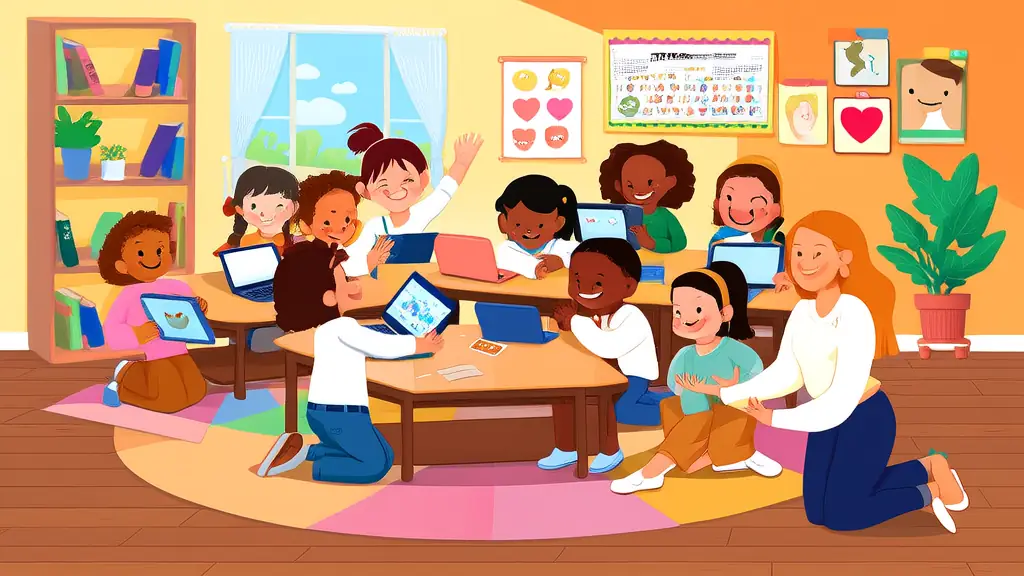
www.uitgedu.com | 自然英语拼读 | KET | PET | 英语点读学习资料
Empowering the Future: Navigating K-12 Education in 2025
As we stand on the cusp of a new era in education, it's clear that the landscape of K-12 learning is evolving at an unprecedented pace. From innovative teaching methodologies to groundbreaking educational technologies, the world of education is more dynamic and responsive than ever before. This post aims to explore these changes, providing valuable insights for both parents and educators. We'll delve into the latest teaching approaches, child development research, tech trends, and offer practical tips, all while highlighting success stories that inspire and guide us towards a brighter future for our children.
The Rise of Personalized Learning: Tailoring Education to Each Student
In recent years, personalized learning has emerged as one of the most promising educational strategies. This approach recognizes that every student is unique, with different strengths, weaknesses, and learning paces. By leveraging data and technology, teachers can now tailor their instruction to meet individual needs, significantly enhancing engagement and academic outcomes.
Example: The Summit Learning Platform, used by over 330 schools across the United States, integrates personalized learning plans, project-based learning, and real-time feedback. Schools using this platform have reported higher student motivation and improved academic performance, particularly in STEM subjects.
Actionable Advice: For educators, start by assessing your students' individual needs through diagnostic assessments. Use this information to create customized learning paths. For parents, engage with your child’s school to understand how they are implementing personalized learning and support your child’s specific learning goals at home.
Child Development Insights: Understanding the Whole Child
Recent research in child development emphasizes the importance of considering not just cognitive but also social, emotional, and physical aspects of growth. This holistic view supports the idea that a well-rounded education should address all these areas to foster resilient, adaptable, and emotionally intelligent individuals.
Research Highlight: A study published in the American Educational Research Journal found that schools focusing on social-emotional learning (SEL) saw significant improvements in students' behavior, attendance, and academic performance. SEL programs, which teach skills like self-awareness, self-management, and responsible decision-making, are increasingly being integrated into K-12 curricula.
Actionable Advice: Teachers can incorporate SEL into daily classroom activities, such as morning meetings or reflective journaling. Parents can reinforce these skills at home by modeling and discussing emotions, setting consistent routines, and encouraging empathy and problem-solving.
Educational Technology Trends: Enhancing Engagement and Accessibility
Technology continues to play a pivotal role in transforming K-12 education. Tools like virtual reality (VR), augmented reality (AR), and artificial intelligence (AI) are making learning more interactive and accessible. These technologies not only enhance the learning experience but also help bridge gaps for students with diverse needs.
Example: Google’s Expeditions AR and VR tools allow students to take virtual field trips to historical sites, museums, and even outer space, making abstract concepts tangible and engaging. Similarly, AI-powered adaptive learning platforms like Carnegie Learning provide personalized math instruction, helping students master complex concepts at their own pace.
Actionable Advice: Educators should explore and integrate these technologies into their teaching, ensuring they align with curriculum goals. Parents can stay informed about the tech tools used in their child’s school and encourage their use at home, where appropriate.
Success Stories: Inspiring Models of Innovation
Across the globe, schools and districts are experimenting with innovative models that are yielding impressive results. One such example is the High Tech High network in California, which focuses on project-based learning, integrating rigorous academics with real-world applications. This approach has led to high graduation rates and college acceptance among its diverse student body.
Case Study: In Finland, the phenomenon-based learning model, introduced in 2016, encourages students to explore interdisciplinary topics, fostering critical thinking and collaboration. This shift has been credited with maintaining Finland’s high ranking in global education standards.
Actionable Advice: For educators, consider adopting or adapting successful models from these case studies. Engage in professional development to learn best practices and collaborate with other educators. For parents, advocate for and support innovative educational initiatives in your local schools, and stay involved in your child’s learning journey.
Conclusion: Embrace the Future of K-12 Education
As we navigate the rapidly changing landscape of K-12 education, it’s essential to embrace the opportunities presented by new teaching methodologies, child development insights, and technological advancements. By staying informed and proactive, both parents and educators can ensure that our children receive the best possible education, preparing them for a bright and successful future.
Let’s commit to continuous learning and innovation, so that together, we can empower the next generation to thrive in an ever-evolving world.